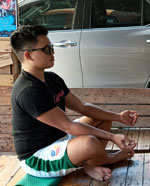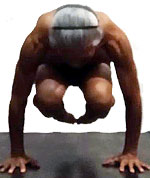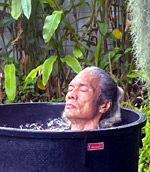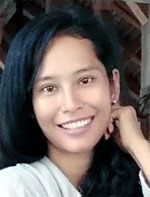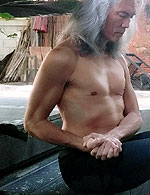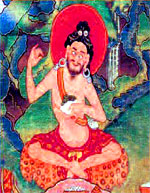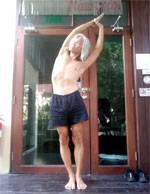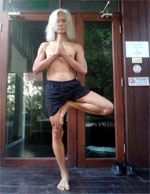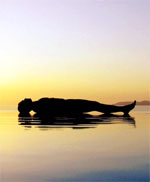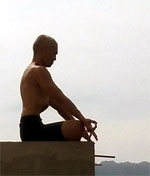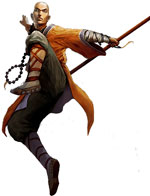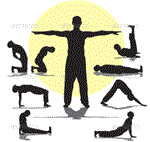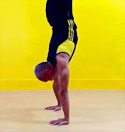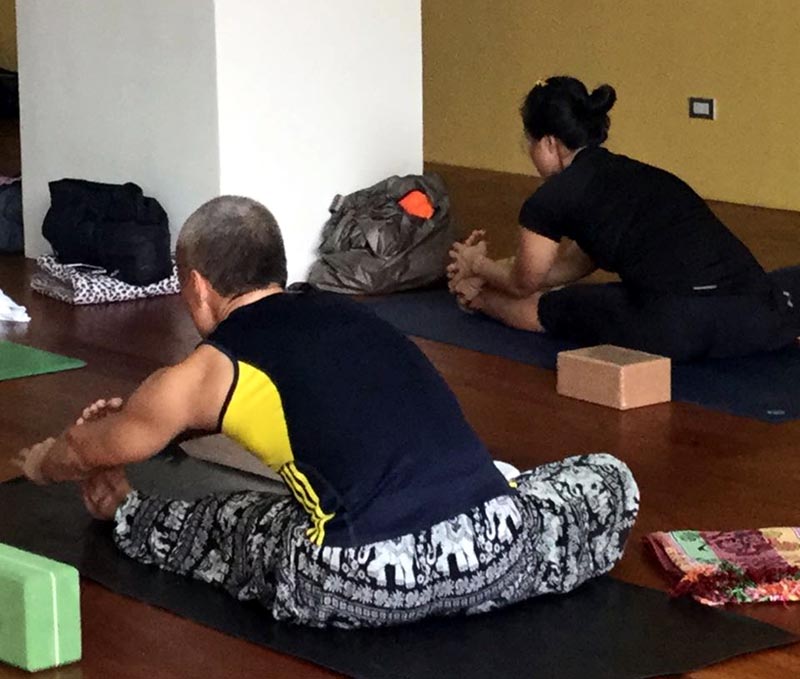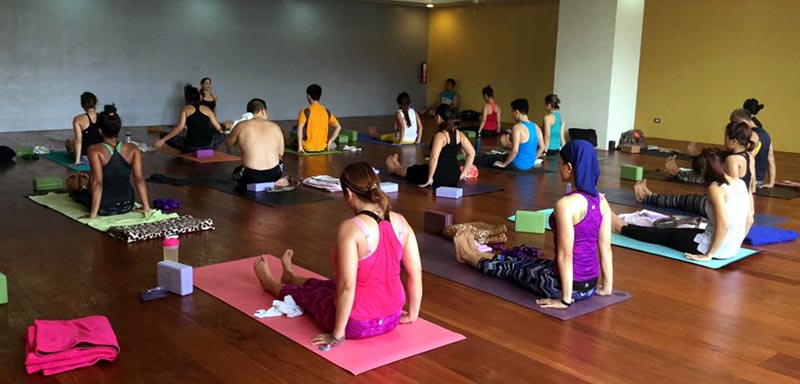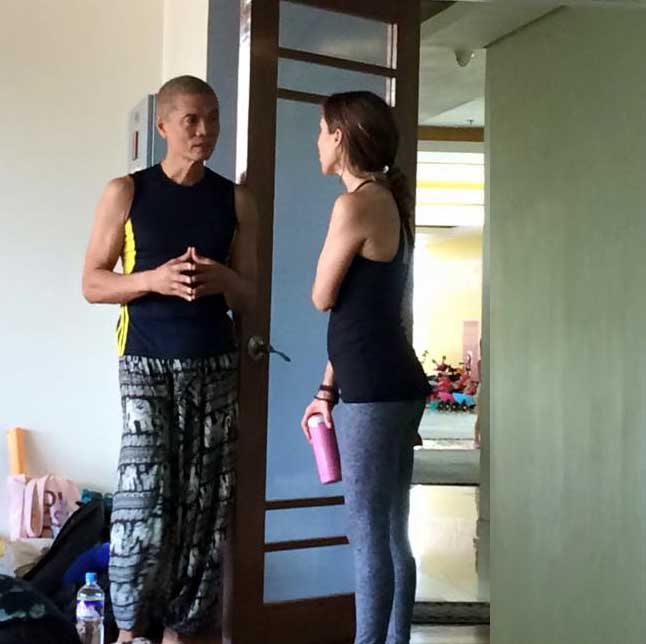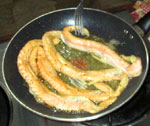
Studio-type Yoga classes
Studio-Type Yoga Series
Yoga classes typically offered in Yoga Studios
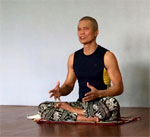 Nov 7, 2015
Nov 7, 2015
Meditation Basics
Location ![]() : Cebu City, Cebu (province), Philippines
: Cebu City, Cebu (province), Philippines
Teaching Format
Since I discovered Vipassana, I have become a regular meditator and have seen my progress with the passing years. Meditation has always been a private practice although every now and then, I get to share it with friends. This time however, Pascale Wettstein, a seasoned yoga teacher currently conducting a 200-hour teacher training program in Cebu, asked me to conduct a meditation session to the current batch of soon-to-be yoga teachers.
Question now is, how do I put my practice into a teaching format? Here's my attempt to do just that.
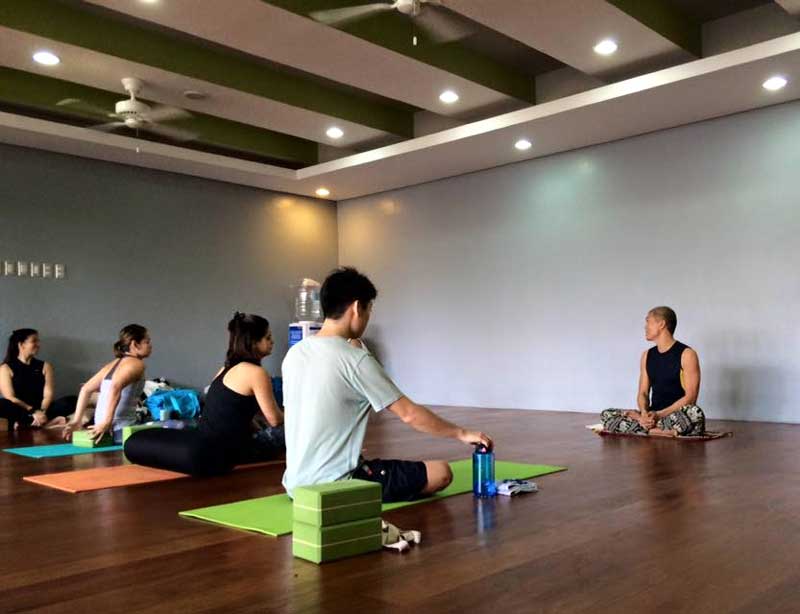
What is Meditation?
There are many established answers to this, but I'll keep it simple within my limited experience. Meditation is a technique of calming and creating stillness in the mind. That's it. It's just a technique. It's not about God, religion or any kind of rite or ritual. How do we create that stillness of the mind? First, we keep the body still. Then we calm the mind. However, it's not as simple as it sounds. Calming the mind is like asking a 2 year-old to remain seated on a chair for an hour. What you do once the mind is still, is up to you. You can meditate for just 10 minutes, or spend your life inside a cave and deepen your meditation.
Objectives of Meditation
You always start your meditation with an intention. What do you want to achieve in this session? In a meditative state, the mind is susceptible to suggestion. Is it to simply calm the mind and body? It can be that simple. You can attempt to stop smoking through meditation. You can heal the body through meditation. You can attempt enlightenment. In some advanced type of meditation like Vipassana, you can perform a deep surgery of the mind to exorcise all the negativities at the root level.
Benefits of Meditation
Of course, you meditate with your own intentions - that's a given. But there are other hidden benefits to meditation.
- healing - first, the body activates its parasympathetic nervous system, allowing the body to heal
- non-reactive - second, by having a calm mind, you develop the habit of being non-reactive. You can observe an event without reacting to it. You can assess your exercisable options and make informed decisions instead of going into auto-pilot
- economy - by not being stressed-out, you also economize your energy, saving it for the more essential tasks
- gifts - this serves as a powerful distraction, but meditation can awaken inherent esoteric abilities
Meditation Techniques
There are many techniques - visualization, observation, uttering a mantra, breath regulation (pranayama), counting, etc. The most popular is to start with the breath. The breath serves as the umbilical cord between the physical world and the esoteric world of prana - the life force governing our universe. The breath also primes the body to be in a meditative state.
Start of Practice
Traditionally, the sequence for meditation is preceded by asana and pranayama. Since we've done our asana, let's begin our meditation by doing a few rounds of pranayama.
- cross your legs either in full lotus, half lotus or just a simple crossing
- keep the sit bones centered and square. It may help to sit on a cushion.
- keep the spine vertical aligned - no slouching
- keep the crown of the head reaching up the sky, creating length and space on the spine
- put your hands by your lap, either on a mudra or just resting on the lap. Best if you can have the thumbs lightly touching each other with right fingers on top of left (for guys) and left over right for females
- light smile on the face - like a Mona Lisa
- we practice Strong Determination (Addithana) on this pose - for the full length of this session, do NOT move or open your legs. Observe the increasing discomfort without any reaction whatsoever. Just observe the sensation with a calm and balanced mind.
- Nadi Shodhan - alternate nostril breathing exercise, regulates vital life force
- Kapalbhati - skull shining forceful exhalation
- Kapalbhati/Nadi Shodhan - forceful exhalation alternating on both nostrils
- we are still into Pranayama, as we continue regulating our breath
- imagine your lungs to be a balloon, inflating with every in-breath, and deflating on every out-breath
- inhale completely, making the most of all the nutrition..all the prana we get from the air
- exhale completely, fully emptying the lungs - no residual air left
- always pause between the in-breath and the out-breath
- on the inhale, fill the chest portion of the lungs first, then continue the breath filling-in the belly, allowing it to expand out
- on the exhale, empty the belly first, followed by the chest...like pressing toothpaste out of its tube
- observe the subleties of the breath. Is there more air coming in or out of one nostril compared to the other? Observe.
- keep observing...is the out-breath warmer than the in-breath? Just how much warmer? Observe without any reaction.
- observe the in-breath as it passes through the inner lining of the nostril
- observe the out-breath as it touches the area above the upper lip
- continue breathing, keeping the mind alert and vigilant
- resume normal breath. Don't regulate the breath anymore. No more Pranayama. Don't even pay attention to your breathing
- instead, focus your attention to what you are thinking - observe your own thoughts
- you are not your thoughts. You are observing the mind's thought-process. Begin to see them from a distance.
- imagine yourself to be a mountain - immovable, permanent and massive. Imagine your thoughts to be passing clouds - they arise, drift by and pass away into nothingness
- if you stray and become lost in your own private thoughts...and this will happen, take refuge back into the breath, and resume observing your thoughts
- now, we stop observing our mind and begin to focus on the body. We put our attention to individual body parts
- bring focus on the head - from the scalp all the way down to the neck. Observe if there is any sensation. Does it feel heavy? Does it feel itchy? Does it feel throbbing? Don't create any sensation...just observe them if there is any. Let's spend a minute here observing the head and any body sensation that might be there.
- bring your attention lower to the muscles at the base of the neck....and across the entire span of the shoulders. Observe. Do you feel anything? Is one shoulder heavier than the other? Is one shoulder higher than the other. Do you feel any sensation? If you do, what kind of sensation. Whatever it is, don't react to it.
- from the shoulders, bring your attention to the entire length of the arm, all the way down to the finger tips. Is there a tingling sensation on the fingers? Do you feel your pulse? Is the pulse stronger on one hand?
- bring the attention up and into the chest. Do you feel it expand on the in-breath? Do you feel it's contraction on the out-breath?
- focus now on the abdomen. On the in-breath, does it expand as much as the chest? When you exhale, which contracts first? The abdomen? or the chest? Observe without any reaction.
- shift the attention now on the pelvic area. Observe for any sensation that might be there. Does it feel fatigued? Is it completely relaxed?
- let us observe both legs from the upper thigh to the toes. It's a huge muscle group. Do you feel anything when you observe it? Is there any tightness? Are the muscles limp or are they tight? Do you feel any sensation on the tips of the toes?
- having scanned the full body, scan it one more time in one full breath - from the top of the head to the tip of the toes
- on the next breath, scan it again for any sensation from the tip of the toes to the top of the head
- let's bring our attention back in the breath and do a deep, long inhale. Continue breathing.
- on the next exhale, let's all utter the OM Mantra and let's do it 3x
- inhale everyone....and
- Aaaaa....uuuuuu....mmmmmmmm
- let us put our hands together in front of our chest, open our eyes...and greet each other Namaste
- this ends our meditation practice
Getting Seated Properly
Pranayama
Meditation Practice
...after 10 minutes of focused breathing
...after 10 minutes of observing the thoughts
OM Mantra
Practice Ends Here
--- Gigit (TheLoneRider)
YOGA by Gigit ![]() |
Learn English
|
Learn English ![]() |
Travel like a Nomad
|
Travel like a Nomad ![]() |
Donation Bank
|
Donation Bank ![]()
Leave a comment?
Reader Comments:
 MichaelDouglas Yap
MichaelDouglas Yap(Nov 10, 2015) Thank u!
 Mechel Zapanta
Mechel Zapanta(Nov 10, 2015) Awesome to see you again Gigit! thanks for teaching us meditation
Yoga-Sequence Series
- Pranayama Sequence Oct 24, 2016
- Tibetan 5 Rites Mar 28, 2016
- Meditation Basics Nov 7, 2015
- Handstand Clinic at Surya Nanda Yoga Studio Aug 23, 2015
- Power Yoga Class - Singapore Mar 21,2015
- Adhitthana Yoga (Yoga of Strong Determination) Sept 4, 2014
- Twist Sequence Jun 28, 2014
- One-Leg Sequence (balancing) Jun 14, 2014
- Core Sequence Jun 7, 2014
- Backbend Sequence May 31, 2014
Next story:

![]()
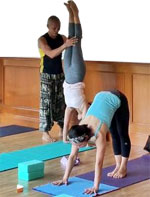
![]()
Yoga Adjustment and Alignment
(Nov 11, 2015) It is standard practice for a yoga teacher to align the student for proper body geometry or to adjust the student to sink deeper into the pose. Does it follow then that a student who can reach his toes is doing better yoga than the one who can't? If a perfect yoga pose is going to your safety edge and taking refuge in the breath, then why is it necessary to adjust the student to sink deeper into the pose?..more »»
More on Cebu City:
About Cebu City
- Cebu City is the 2nd biggest city in the Philippine (next to Manila) - and it continues to build and expand. Traffic is getting bad. Decentralization is being developed with the SM Super Mall in the SRP south and the suburban towns in the north.
- Boat from the airport to the city center - even without traffic, it takes about 4 rides to reach the city. But with Cebu's increasing traffic congestion, it has become a nightmare. Instead of taking the land route, take the water route - no traffic, fresher air and cheaper. From the airport, take the yellow multi-cab straight to the river port and take the ferry (there's only one destination) to the city. Take the 02B jeep and get off at UC near Jones - you're now on the city's main artery.
- given its size and increasing congestion, Cebu really needs a mass railway system - something that is conspicuously lacking, but no one seems to complain about
- Cebu is bursting at the seams on the yoga scene. There are about 20 yoga centers in the city - from yoga studios to gyms offering yoga and hotels jumping on the bandwagon
- a trendy and safe place in Cebu where you can chillout for coffee and enjoy good eats would be at the Ayala Mall
- there are other pocket-areas for trendy hangouts - Banila Town Center, Crossroads, Escario Plaza, La Vie, etc.
- the tourist area where most of the budget hotels and restaurants are, are located within the Mango area, although it has a seedy belly feel. Kids may swarm on you pretending to be begging, but they could be picking your pocket or your backpack pockets - be careful
- many pick-pockets in the Colon area - be careful
Cebu City Google Map
 Cebu City, Philippines
Cebu City, Philippines
 Tops - hilltop offering panoramic view of the city
Tops - hilltop offering panoramic view of the city Taoist Temple - temple on a hillslope in Lahug with panoramic view of the city
Taoist Temple - temple on a hillslope in Lahug with panoramic view of the city
 Hostel Seven Cebu - newly opened, resto/bar, central location, solo/group travellers
Hostel Seven Cebu - newly opened, resto/bar, central location, solo/group travellers
Juana Osmeña Street, Cebu City S Hotel & Residences - new hotel, luxury rooms, central location
S Hotel & Residences - new hotel, luxury rooms, central location
827 M. Velez corner Andres Abellana St.
 Fujinoya - new and refreshing twists to Western style desserts using Japanese techniques
Fujinoya - new and refreshing twists to Western style desserts using Japanese techniques
Wilson St., Lahug, Cebu City - tel. 888.6075 Bad Boys Wingz - Buffalo Wings, unique versions of sauces! Great service, accommodating staff, bad boys vibe
Bad Boys Wingz - Buffalo Wings, unique versions of sauces! Great service, accommodating staff, bad boys vibe
Kasambagan, Cebu City | (032) 415 4811
 Love Yoga World - yoga studio
Love Yoga World - yoga studio
11/fl, Skyrise 2 Tower, IT Park, Lahug, Cebu City Yoga Now - first Yoga and Wellness studio in Mactan offering daily Yoga Classes
Yoga Now - first Yoga and Wellness studio in Mactan offering daily Yoga Classes
at The Yacht Club Mactan
 Cebu Mountain Bike Adventure - MTB tours, bike sales and repairs. Bed and Breakfast + Resto Cafe + wifi
Cebu Mountain Bike Adventure - MTB tours, bike sales and repairs. Bed and Breakfast + Resto Cafe + wifi
1298-b V.Rama Ave, Guadalupe, Cebu City | 0942.959.7451
Cebu City to Iloilo City by boat
- Trans Asia Shipping - Terminal 2, Pier 3, 15 hours, Mondays and Fridays, 6 pm (ETA 8:30 am, next day), Trans Asia 19 boat, Tourist P1545 (SR P1236), 2nd Class open air P1400 (SR 1120)
Cebu City to Ormoc by boat
- SUPERCAT - 3 hours, 5:30 am | 9:00 am | 12:30 pm | 4:00 pm
Business Class: Regular 1500, Student 1,200, Senior/PWD 1,071
Tourist (Aircon) & Economy (Non-aircon): Regular 1100, Student 880, Senior/PWD 785 - OCEANJET - 3 hours, 5:00 am | 6:00 am | 9:30 am | 12:00 pm |1:00 pm | 4:30 pm
Open-Air (OA) 1100, Tourist Class (TC) 1100, Business Class (BC) 1600
Cebu City to Bantayan Island
The best and fastest way is by Ceres Bus at the North Bus Terminal, adjacent to SM City. The bus takes 4.5 hours going north until it reaches Hagnaya Port. From there, you pay the ferry company separately. The bus boards the ferry until it reaches Sante Fe Port (1.5 hours) in Bantayan Island. From Santa Fe, the bus goes to Bantayan Poblacion and then to Madridejos.
Ceres Bus - PHP 260 (to Santa Fe), 4.5 hours to Hagnaya Port + 1.5 hours by ferry.
Schedule: according to the dispatcher, trips begin at 6 pm (this arrives Hagnaya around 10:30 pm but the first ferry leaves at 1 am...that's a 2.5-hour wait at the port), leaving every hour until 1 pm the following day (I speculate that 1 pm is the last trip to avoid rush hour traffic along Consolacion). This doesn't match the ferry schedule so the bus simply waits until a ferry departs. e.g. the 6 pm trip arrives 10:30 pm and waits for the 1 am ferry. The last trip, 1 pm, arrives 5:30 pm, in time for the ferry's last trip.
Bus arrives at terminal 30 mins before departure. Luggages are P150/pc if no passenger.
Alternatively, you can get off the bus at Hagnaya Port and take the ferry independently. There are 2 ferry companies:
Super Shuttle Ferry
PHP 359 + 25 Terminal fee, 1.5 hours

Island Shipping
PHP 350 + 25 Terminal fee, 1.5 hours

Cebu City to Dumaguete
Cebu City to Dumaguete by Boat
- George and Peter Lines - Mon/Thur/Sat/Sun 10pm, (035)225.4337, 0922.557.1023
- Oceanjet - via Tagbilaran, daily 6am, dumticketing@oceanjet.net, 0918.898.2188
- Cokaliong - Mon/Tue/Wed/Thur/Fri/Sat 7pm, Sun 12pm, 6 hours, (035)225.3599
Cebu City to Dumaguete via Liloan (bus, boat, jeep, tricycle)
- Cebu City South Terminal - take the southbound Ceres bus to Liloan, P200, 5 hours
- Liloan - the bus drops you off at the Liloan Port where you board the Fastcraft to Sibulan, Negros Oriental, P62, 30 mins
- Sibulan - at the Sibulan Port, the jeeps wait for Fastcraft passengers to take them to the public market in Dumaguete, P12, 30 mins.
- Public Market - at the market, you can take any tricycle to your hotel, P8 for short trips
Cebu City to Tagbilaran, Bohol
Cebu City to Tagbilaran, Bohol
- Trans Asia Shipping - (updated Jan 25, 2025) Terminal 2, Pier 3, 4 hours, Mondays, 12nn (ETA 4 pm), Trans Asia 3 boat, 2nd Class open air P370 (SR 296)
- Lite Ferries - (updated Jan 25, 2025) Pier 1 Terminal 1, 4 hours, departs daily 1:00pm and 10:00pm, Sundays only 10:00pm
Standard (Lying) Php 370, Tourist (Lying Aircon) Php 520
Address: 1022 Mj Cuenco, Cebu City, 6000 Cebu
Email Address: info@liteferries.com.ph
Mobile Number: +639778225483 / +639989995483
Telephone: (032) 255-1721 to 23, 25, 26 /(032) 349-7349
-------------------
- Weesam Express - Pier 4, departs 9:00 AM, 2:00 PM, 6:30 PM, 2 hours
one way: Economy (aircon) P500.00, Economy (non-aircon) P400.00, First Class P600.00
round trip promo (at least 2 days advance booking): Economy (aircon) P600, Economy(non-aircon) P500, First Class P1200
round trip promo (1 day or on the day booking): Economy (aircon) P800, Economy (non-aircon) P700, First Class P1200 - Ocean Jet - Pier 1, departs 6-7-8-9:20-10:40-11:40AM, 1-2-4:20-6:35PM, 2 hours
Open Air / Tourist Class P800, Business Class P1000
+63 932 8734 885 / +63 922 8572 300 - SuperCat (2GO) - Pier 1, departs 08:15-13:30-15:10-18:00-19:40
P 500.00
+63 32 233 7000
Cebu City to Siquijor by Boat, via Tagbilaran
Cebu City to Siquijor, via Tagbilaran
- Lite Ferries - Pier 1, departs M/W/SAT at 1:00pm, 10 hours, economy Php 649 (through barkota.com), layover in Tagbilaran 5:45pm-8:00pm, arrives Larena Port, Siquijor at 11:00pm
+63 977.822.5483 / +63 998.999.5483 / +63 925.347.5483 / (032)255-1721 to 26 / (032)414-9001 to 03
info@liteferries.com / www.liteferry.com - Ocean Jet - Pier 1, departs daily at 1pm, 5 hours
Open Air P1600
+63 932 8734 885 / +63 922 8572 300
Cebu City to Siquijor by Bus, via Liloan (Santander)
(as of Jan 2023)Sugbo Urban
There is only one bus plying this route - Sugbo Urban. Tourist class coach, a/c, comfortable, Sun-Fri (these dates keep changing). P420 for bus, P275 for ferry to Liloan. Leaves Cebu City (South Bus Terminal) at 8 pm (Sundays 1 am), heads south to Liloan (Santander), takes the ferry to Larena Port, Siquijor, docks around 5 am, makes a clockwise roundtrip around Siquijor Island - Larena, Enrique Villanueva, Maria, Lazi (stops at Lazi market for breakfast and leaves 6:50 am), San Juan, Siquijor (arrives 8am, P50 from Lazi to Siquijor Poblacion) and catches the 1pm ferry at Larena Port for Liloan, Cebu and resumes its land route. Arrives Cebu City 10 pm.
Sugbo Urban is the cheapest and most convenient way because when it reaches Larena Port (Siquijor), it continues its trip around the island (clockwise) along the circumferential road, passing through - Enrique Villanueva, Maria, Lazi, San Juan, Siquijor...and back to Larena. It spares you the cost of hiring a tricycle or habal-habal which charges exhorbitant fares. Besides, it's a long trip to the other side of the island to be taking by tricycle.
This is also the slowest. The bus arrives Liloan Port around 12:30 am but the ferry leaves 2:30 am (2 hours of waiting time). The ferry trip is a slow 4 hours (this should only take 1.5 hours with Montenegro or Alesson), arriving Larena around 6:30 am. This 4 hour voyage offers no comfortable sleeping - you stay upright on your seat or sleep on the floor on a cardboard. The boat waiting/voyage takes 6 hours. Altogether, the entire trip takes 11.5 hours until the bus reaches Lazi.
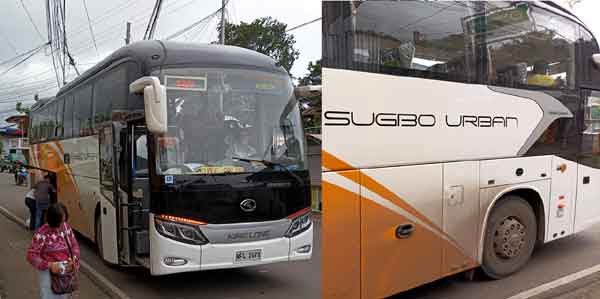

Cebu City to Camotes Island
Cebu City to Camotes Islands
- via Poro - from Pier One in Cebu City, take the Ocean Jet for Poro, 2 hours, daily trip - 6am and 3pm (0936.823.8762 |0956.270.6610 | 0999.889.9999).
- via Consuelo - from Cebu City, take the northbound bus passing through Danao and get off at the Danao Port. At the Port, take a Jomalia Shipping boat for Consuelo (San Francisco, Camotes), P220/pax, a/c, 2 hours, daily trip - 5:30am, 7:00am (special trip), 8:30am, 12:00 noon (express), 2:30pm, 5:30pm and 9:00pm (express, Fri/Sat/Sun only).
Camotes Islands to Cebu City
- Poro - Cebu City (fastest and most direct) - go to Poro and take the 8am or 5pm Ocean Jet to Pier One in Cebu City, P380/pax/aircon, 2 hours
- Consuelo - Danao - Cebu City - go to Consuelo (San Francisco) and take the Jomalia Shipping boat to Danao, P220/pax, a/c, 2 hours, daily trip - 5:30am, 7:00am (special trip), 8:30am, 12:00 noon (express), 2:30pm, 5:30pm and 9:00pm (express, Fri/Sat/Sun only). From Danao, take the Ceres Bus to Cebu City
Blogs
Cebu City
CEBU CITY2025
2024
2022
2017
2015
2014
2013
2012
More on Cebu Province:
Suggested Destinations in Cebu
- Camotes Islands - caves, beaches
- Cebu City - rich in culture and history, 2nd largest city in the Philippines
- Moalboal - amazing coral reef system, sardine bowl, deep drop-off for freediving
- Oslob - Butanding (whale shark) watching
- Bantayan Island - long stretch of fine white sand beach, Virgin Island for snorkeling
- Malapascua Island - divers' paradise for seeing the rare Thresher Shark
- Cantabaco Cave - Toledo
- Barile Waterfalls - Barile
- Whale Shark Tour - Oslob
- Carcar - chicharon and lechon in public market
Currency Converter
Next Teaching story:
»» back to Yoga
»» back to Teaching
»» back to Homepage
ARCHIVE 2025:
JAN |
FEB |
MAR
1970 |
1973 |
1975 |
1976 |
1979 |
1981 |
1996 |
2000 |
2001 |
2002 |
2003 |
2004 |
2005 |
2006 |
2007 |
2008 |
2009 |
2010 |
2011 |
2012 |
2013 |
2014 |
2015 |
2016 |
2017 |
2018 |
2019 |
2020 |
2021 |
2022 |
2023 |
2024 |
2025 |
ALL BLOGS

